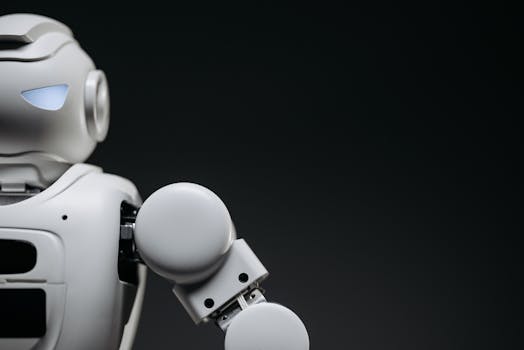Cutting-Edge Robotics and Automation
Robotics and automation - one science fiction concepts to now integral components of modern industry and everyday life. These cutting-edge technologies are revolutionizing various sectors by enhancing efficiency, productivity, and safety. Advancements in robotics and automation are driven by the convergence of factors including artificial intelligence (AI), machine learning, and more sophisticated hardware.

Advancements in Robotics Technology
Recent years have seen significant progress in robotics technology, leading to the development of more sophisticated and capable robots. Modern robots are equipped with advanced sensors, AI algorithms, and improved mechanical designs, enabling them to perform complex tasks with high precision. One notable advancement is the development of collaborative robots, or cobots. Unlike traditional industrial robots that operate in isolation, cobots work alongside humans, enhancing productivity without compromising safety. Companies like Universal Robots have pioneered this technology, making it accessible to small and medium-sized enterprises (SMEs) (Universal Robots).
Another significant breakthrough is in the field of autonomous mobile robots (AMRs). These robots can navigate complex environments without human intervention. They are widely used in warehouses and distribution centers to optimize logistics and inventory management (Barcoding Inc.).
Automation in Manufacturing
The manufacturing sector has been one of the primary beneficiaries of automation technology. Automation has transformed production lines by reducing manual labor, minimizing errors, and increasing output. The adoption of Industry 4.0 principles has further accelerated this transformation.
Key technologies driving automation in manufacturing include:
- Internet of Things (IoT): IoT devices collect real-time data from machinery and processes, enabling predictive maintenance and efficient resource management.
- Artificial Intelligence (AI): AI algorithms analyze data to optimize production schedules, improve quality control, and streamline supply chains.
- Robotic Process Automation (RPA): RPA automates repetitive tasks such as data entry, reducing human error and freeing up workers for more strategic roles.
The integration of these technologies has led to the emergence of smart factories where machines communicate with each other autonomously to improve efficiency and flexibility (McKinsey & Company).
Healthcare Robotics
The healthcare industry is increasingly leveraging robotics to enhance patient care and streamline medical procedures. Medical robots assist in surgeries, rehabilitation, diagnostics, and patient monitoring. Surgical robots like the da Vinci Surgical System provide surgeons with enhanced precision and control during minimally invasive procedures. These systems reduce recovery times and minimize surgical risks for patients (Intuitive Surgical). Robotic exoskeletons are another promising innovation. They aid patients with mobility impairments by providing support and facilitating rehabilitation exercises. Companies like Ekso Bionics are at the forefront of developing such technologies (Ekso Bionics). Telepresence robots enable remote consultations between doctors and patients, improving access to healthcare services in underserved areas (InTouch Health).
Robotics in Everyday Life
Beyond industrial and healthcare applications, robotics is making its way into everyday life. From household chores to entertainment, robots are becoming an integral part of our daily routines. Home automation systems like robotic vacuum cleaners (e.g., Roomba) have gained popularity for their convenience and efficiency in maintaining cleanliness (iRobot). Similarly, robotic lawn mowers handle yard maintenance autonomously.
The entertainment industry also benefits from robotics technology. Animatronics bring lifelike characters to theme parks and movies, creating immersive experiences for audiences (Disney). Educational robots designed for children foster learning in science, technology, engineering, and mathematics (STEM) through interactive play (Wonder Workshop).
So Much More Ahead for Robotics and Automation
The future of robotics and automation holds immense potential across various domains. Emerging trends such as swarm robotics—where multiple robots work collaboratively to accomplish complex tasks—are poised to revolutionize fields like agriculture and disaster response.
| Trend | Description | Potential Impact |
|---|---|---|
| Swarm Robotics | A system where multiple robots work together autonomously. | Enhanced efficiency in agriculture, search-and-rescue missions. |
| Soft Robotics | Robots made from flexible materials mimicking biological systems. | Improved adaptability for delicate tasks in healthcare and manufacturing. |
| Cognitive Robotics | Integration of AI to enable reasoning and decision-making capabilities. | Advanced interaction with humans; better autonomous decision-making. |
| Biorobotics | Merging biological organisms with robotic systems. | Pioneering medical treatments; new forms of prosthetics. |
| Aerial Robotics (Drones) | Drones equipped with AI for various applications. | Enhanced delivery services; environmental monitoring; disaster management. |